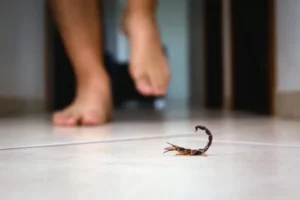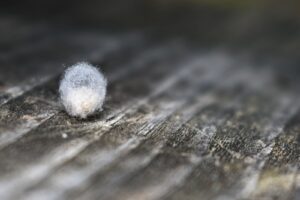Home / Blog / Spiders / 7 types of Poisonous Spiders
7 types of Poisonous Spiders

Scientifically reviewed by Daniel Baldwin, BCE, CCFS, CP-FS
-Published on September 26, 2022
-Updated on March 11, 2025
It can be hard to identify a small spider as it runs by or is hanging high up in its web. But, it’s important to know the difference between harmless spiders in your yard and venomous spiders that may have infiltrated your home. Learn about the most dangerous spiders in the world and North America, how to identify them, and how poisonous their bites really are.
What are the most dangerous spiders in the world?
There are many different kinds of venomous spiders, and the level of danger can vary by species.
Worldwide, the following spiders are the most venomous:
- Brown recluse spider (known as the most deadly to humans)
- Brazilian wandering spider
- Yellow sac spider
- Wolf spider
- Black widow spider
- Brown widow spider
- Red widow spider
- Redback spider
- Funnel-web spider
Most of these spiders get their name from the colors on their body or the kind of web they spin.
What are the most dangerous spiders in North America?
In North America, more specifically, the following spiders are the most venomous and dangerous to humans or pets.
Wolf Spiders
This large spider can grow over 1 inch in length. When threatened, it can attack a human. Wolf spiders are not poisonous, though as with all spiders, bites may cause reactions in certain individuals.

Black Widow Spiders
There are several types of black widow spiders, including the northern black widow, the western black widow, and the southern black widow. Their venom is easily the worst in North America, with the southern black widow having venom that is 15 times more than that of a rattlesnake, ounce for ounce. Luckily their bite delivers on a tiny amount of this venom.
While they are not the world’s deadliest spider, their venom can cause severe nerve malfunctions that are painful and dangerous. Female southern black widows are the most dangerous as their venom is the most potent. You can identify them by their yellowish orange hourglass marking (different from the red hourglass of northern and western black widows).

Brown Recluse Spiders
Significantly more dangerous than some of the other spiders above, the brown recluse spider’s bite can cause necrosis or cell death in tissues and organs. This venom usually stays localized in one area, but it can be very dangerous in 10% of cases.

Yellow Sac Spiders
Most spider bites in the U.S. are from yellow sac spiders, especially if you get a bite while you’re sleeping. While they do have venom, their bites aren’t too dangerous compared to some of the spiders above. Their painful bites can cause minor skin irritation as well as dead tissue.

Red, Gray, and Brown Widow Spiders
Yes, there are different types of widow spiders, and they are also venomous. The red widow spider is venomous, but it also prefers to live far away from humans so it rarely causes harm. The gray widow spider and the brown widow spider are actually the same (its coloring can vary between brown and gray). This spider has a painful bite but delivers less toxin to its victim than the black widow, so it is less dangerous.

Banana Spiders
Banana spiders are a group of spiders that come from tropical regions, often on banana shipments. If they do bite, their bites may cause a bit of irritation at the site. Since this is a group of different spiders, some may be more aggressive than others. There is one type of banana spider, the Brazilian wandering spider, that does produce more venom than other banana spiders.

If you find one of these spiders in or around your home, you can try to get rid of them on your own or enlist the help of a professional pest service to identify the species and address your poisonous spider problem.
Related Articles
Visit our blog to learn more.
→





